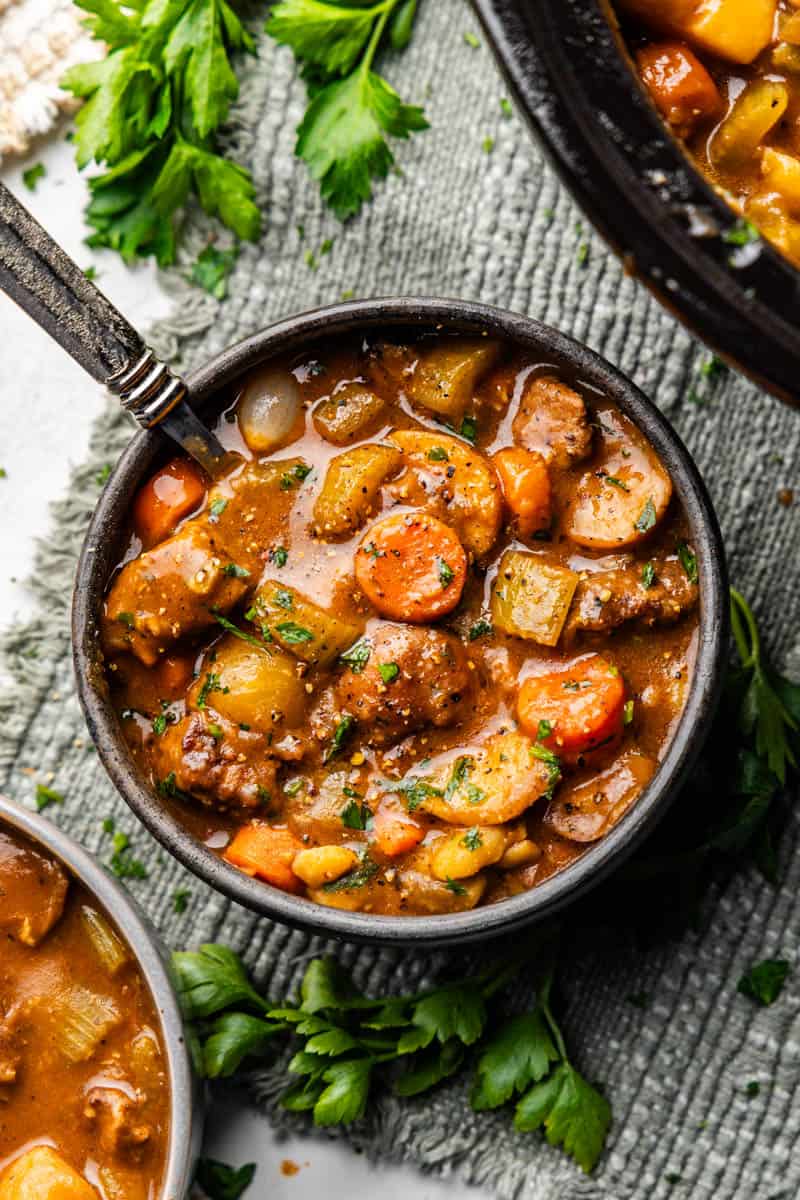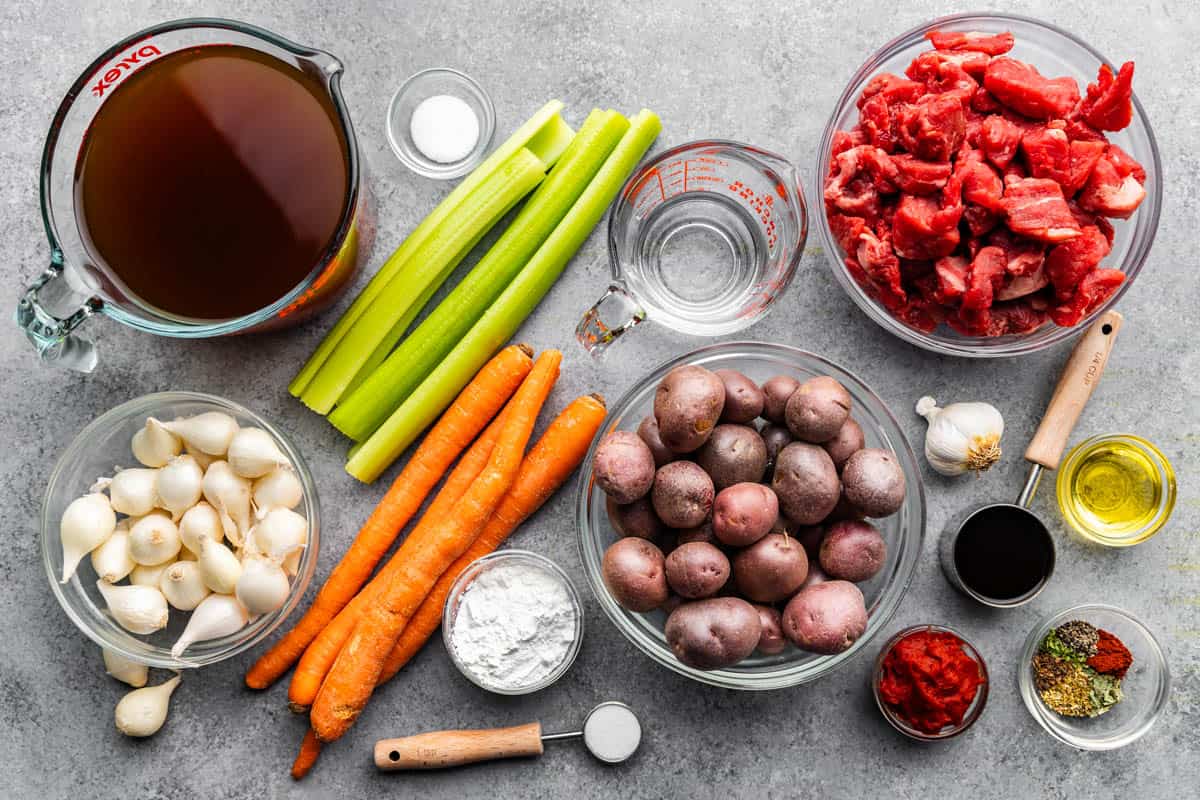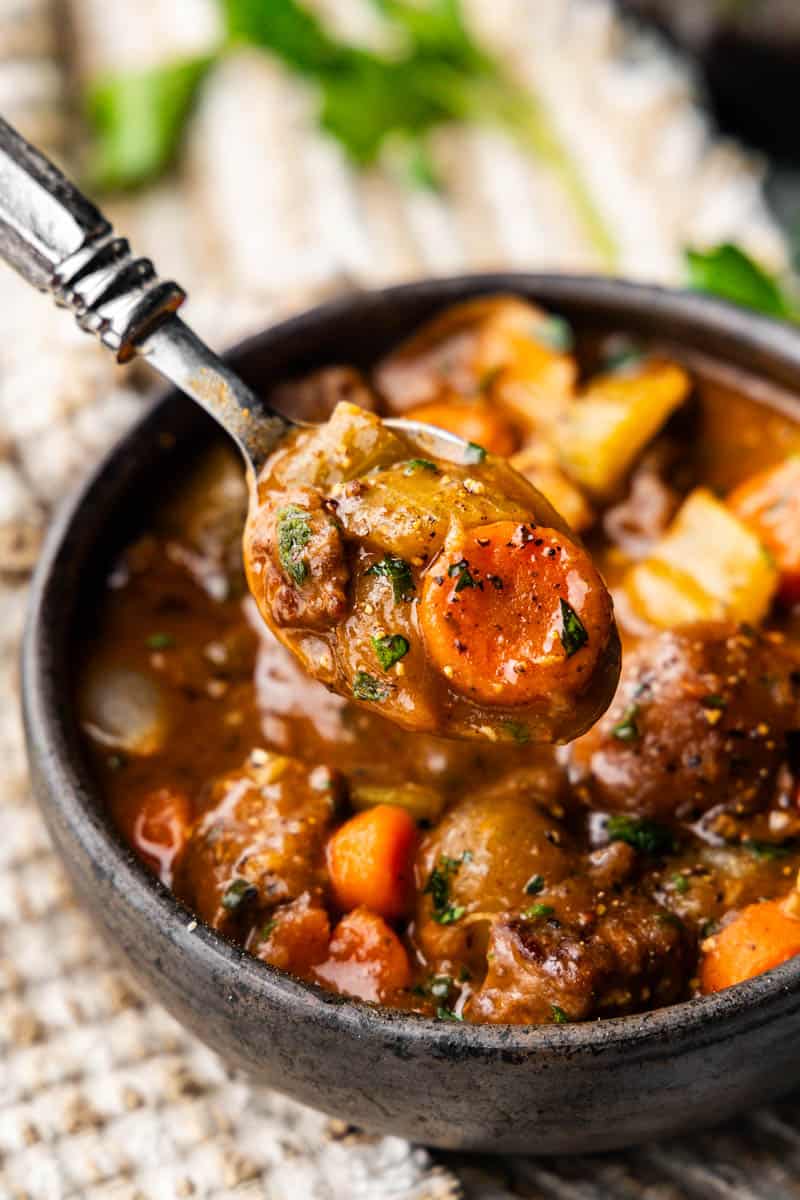Slow Cooker Beef Stew – The Stay At Home Chef
We took our favorite old-fashioned beef stew and made it even better! Now you can cook this hearty classic low and slow in your slow cooker. With tender, melt-in-your-mouth beef, hearty vegetables, and perfectly seasoned flavor, this dish is guaranteed to satisfy any hungry belly.
Looking for more delicious stews? Give our Old Fashioned Beef Stew or our delicious Old Fashioned Chicken Stew a try!
Why Our Recipe
- Cooked low and slow for irresistibly tender beef and perfectly cooked vegetables.
- A unique blend of allspice, paprika, and Worcestershire sauce gives this stew a standout flavor you won’t forget!
- Pearl onions add a subtle sweetness and texture that make this stew shine.


Nothing beats a warm bowl of stew on a cold winter day—it’s the ultimate comfort food! You’ll love how easy it is to toss everything into the slow cooker and let it simmer to perfection. Imagine coming home to the irresistible aroma of freshly made stew, ready to enjoy. This recipe is perfect for holidays, special occasions, potlucks, or simply satisfying a craving for a hearty, home-cooked meal.
Ingredient Notes


- Beef Stew Meat: If pre-cut stew meat isn’t available, purchase a chuck roast and cut it into 1- to 2-inch cubes yourself.
- Cornstarch: Divided and used in two stages—first to coat the beef for browning, then as a thickener at the end.
- Olive Oil: Substitute with any neutral cooking oil, such as vegetable or canola oil.
- Garlic: Freshly minced garlic provides the best flavor, but jarred minced garlic works in a pinch.
- Beef Broth: Choose a good-quality, low-sodium beef broth to create a flavorful stew base.
- Red Potatoes: Ideal for stews as they hold their shape well when cooked. If unavailable, Yukon Gold potatoes are a great substitute. Avoid russet potatoes, as they tend to break apart in stews.
- Pearl Onions: Often found in the frozen vegetable section. If unavailable, substitute with roughly chopped white or yellow onion.
- Carrots: Baby carrots work too; just cut them into smaller pieces for even cooking.
- Granulated Sugar: A small amount balances the acidity and enhances the overall flavor.
- Allspice: A single spice derived from a berry (not a spice mix), it adds a warm, unique note that’s the secret to this recipe.
Stew Meat
Most grocery stores sell precut stew meat near the butcher department, but if you can’t find it, you can easily cut your own chuck roast into cubes. You can also use other cuts of meat suitable for pot roast, such as bottom round, top round, or brisket.
Pearl Onions
Pearl onions are the star of the show in this recipe! While fresh pearl onions are seasonal, you can always find them in the frozen section of your local grocery store—and we actually prefer them that way. They’re mild in flavor, already peeled, and ready to toss whole into the stew.
If you can’t find these little gems, a regular chopped white or yellow onion will work as a substitute, but it won’t bring quite the same charm as a stew made with pearl onions.


Cornstarch Slurry
For this recipe, you’ll make a cornstarch slurry—a simple mixture of cornstarch and liquid used to thicken soups and stews. Typically, slurries are made by whisking cornstarch with water, beef broth, or another liquid before adding it to the dish. Similar to a roux used for thickening gravy or soup, a slurry is prepared separately and then gradually stirred in.
Adding cornstarch directly to a hot dish can cause clumping, as it doesn’t incorporate properly on its own. The liquid in the slurry helps disperse the cornstarch evenly, ensuring a smooth and lump-free consistency.
Storage & Reheating Instructions
Cool the stew to room temperature before transferring it to containers for storage.
Refrigerate in an airtight container for 3 to 4 days.
To freeze, transfer to an airtight freezer container or a resealable freezer bag. Remove as much air as possible and freeze for up to 3 months.
Reheat on the stove over medium heat, adding a little water or broth if necessary to adjust consistency.
Reheat in the microwave in 30-second increments, stirring in between each for even heating.

